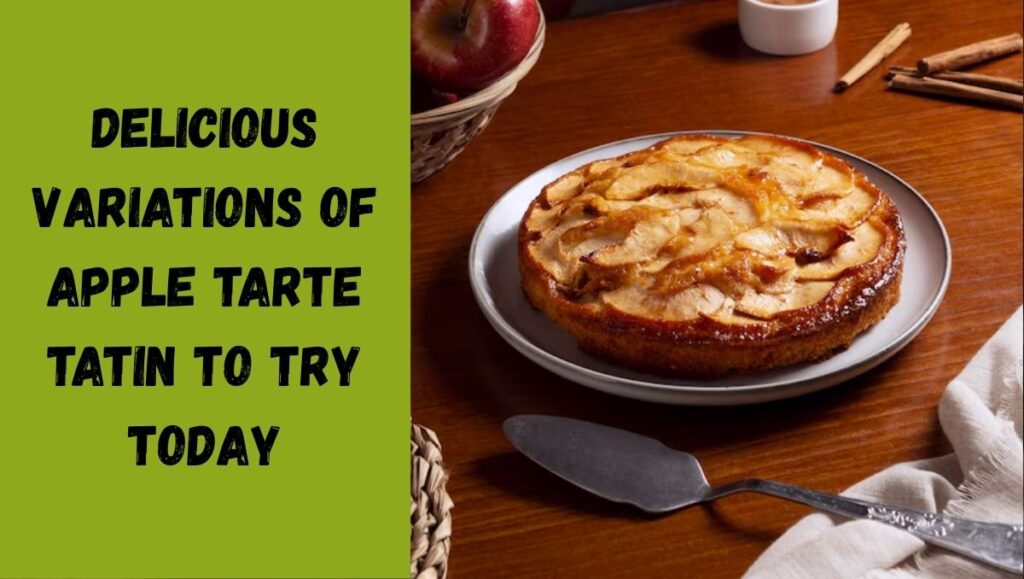Rising to find the aroma of warm, gooey sticky buns baking in the oven is quite unlike. Combining rich brown sugar, creamy butterscotch, and fluffy cinnamon rolls in one mouthful, buttery sticky buns are the perfect luxurious breakfast. This recipe’s overnight preparation—you can do all the labor the night before and have fresh-baked buns in the morning with no effort—makes it even more enticing.
These buns provide the ideal mix of soft dough, sweet filling, and a rich, sticky glaze that coats every mouth whether your event is a holiday brunch or just a treat for yourself. Unlike some time-consuming morning pastries, this overnight variation lets the dough rise while you sleep. From ingredients and preparation advice to baking and storage, this book will bring you through everything you need. You will also learn how to solve typical problems for flawless outcomes every time and personalize the recipe for your taste.
Ingredients: Everything You’ll Need for Sticky Sweet Success
Making Overnight Butterscotch Sticky Buns begins with selecting the appropriate components; each one contributes significantly to taste and texture. For the dough, you’ll want all-purpose flour, active dry yeast, granulated sugar, warm milk, melted butter, eggs, and a little salt. These components guarantee your rolls’ rich, fluffy, softness. Combining cinnamon, brown sugar, and melted butter for the filling produces a sweet, spicy inside that complements the outside glaze rather nicely.
Made with a blend of brown sugar, heavy cream, butter, vanilla essence, and a sprinkling of salt to gently temper the richness, the butterscotch topping is the star of the show. Optional add-ins like chopped walnuts or pecans provide a wonderful nutty richness and crunch. For a convenience, you may also use quick pudding mix; for a richer caramel, use corn syrup. Together, these components provide the ideal combination of creamy, sticky, and sweet that distinguishes a great sticky bun.
Preparing the Dough: Creating the Soft Base for the Buns
Your sticky buns are based on dough, so perfecting it guarantees smooth and pillowy texture. Start by dissolving the active dry yeast in your milk until it is lukewarm—not hot. Let the yeast bloom until it turns frothy, five to ten minutes. Combine flour, sugar, salt, eggs, melted butter in a separate big mixing basin. Stirring steadily, gradually add the yeast mixture to create a sticky dough.
Either by hand or with a stand mixer with a dough hook, knead the dough for around eight to ten minutes until it is smooth and elastic. After greasing a bowl, cover the dough with plastic wrap or a moist cloth and let it rise in a warm environment for around 1.5 to 2 hours or until twice in size. This rise is really important as it gives the buns their light, airy texture and develops their taste. Rising yields ready dough for rolling and filling.
Making the Butterscotch Glaze: Sticky, Sweet, and Irresistible
The trademark ingredient that gives sticky buns their name and delicious appeal is the butterscotch icing. Starting on medium heat in a pot, melt butter. Add brown sugar, heavy cream, and a little of salt; stirring until the liquid is smooth and starts to boil. Cook for two to three minutes to thicken slightly; then, off the heat, mix in vanilla essence.
This delectable blend should have a smooth, pourable consistency that thickens with cooling. Make sure the bottom of the buttered 9×13-inch baking dish is completely covered as you evenly pour the glaze into If you are using nuts, toss them over the glaze such that they caramelize and toasts during baking. Top this glaze with the buns, and as they bake the butterscotch will bubble up covering every inch in delicious, sticky glory. By miles, this handmade glaze tastes deeper, richer than store-bought caramel sauce.
Rolling and Filling: Building Flavor into Every Layer
Roll and stuff your sticky buns when the dough has risen and the icing is ready. Lightly sweep the surface and roll the dough into a big rectangle about sixteen by twelve inches. Over the whole surface, liberally spread softened butter; next, evenly blend brown sugar and cinnamon. The famous filling melts in baking to form gooey swirls within every bun. Over the sugar mixture, think about scattering broken almonds, little chocolate chips, or raisins to provide extra complexity.
Tightly roll the dough into a log from the long edge, then cut it into 12 equal pieces. Arrange each roll cut-side up above the butterscotch glaze in the ready baking dish. Allow some leeway for rising by spacing the buns somewhat apart. Plastic wrap should be securely covering the pan and refrigerated overnight. This stage improves the taste and simplifies and quick morning baking.
Morning Baking: Rise, Bake, and Flip for Gooey Goodness
Take your sticky buns out of the refrigerator following morning and let them remain at room temperature for 30 to 45 minutes to let the last rise. This rest time guarantees soft, fluffy results and helps the dough to come alive. Turn on the oven to 350°F (175°C). Bake the buns uncovered on the middle rack for 30 to 35 minutes until golden brown and cooked through once they have become somewhat puffy and no longer cold.
Watch them so the tops avoid browning before the centers are finished. Out of the oven, let them sit for five minutes once cooked. Then gently turn the baking dish onto a big serving surface or tray while the glaze is still molten. Warm butterscotch sauce pours down the edges, and roasted almonds sparkle here—the perfect moment. Present warm right away and savor the enticing mix of caramelized sugar and delicate cinnamon-swirled dough.
Storage and Reheating Tips for Leftovers
Though they taste best fresh out of the oven, sticky buns can easily refrigerated and reheated with great results. Store leftovers by letting the buns cool totally before carefully wrapping them in plastic wrap or an airtight container. They keep at ambient temperature for up to two days or refrigerated for up to five days. Freeze individual portions in freezer-safe bags for up to three months to have more long-storage. Reheat single buns on a microwave-safe plate for 20 to 30 seconds or until warm.
For several buns, foil them and cook in a 300°F oven for 10 to 15 minutes. Steer clear of overheating to avoid drying them out. Drizzle glazing with more heavy cream or additional butterscotch sauce before warming to freshen it. These techniques guarantee that your sticky buns stay soft and luxurious even several days after baking, thereby making them a handy treat any time.
Custom Variations to Try for Unique Flavors
Once you have perfected the fundamental recipe, you will have no trouble adjusting Overnight Butterscotch Sticky Buns to suit your tastes or seasonal inclination. Eliminate the pecans or use chopped apples or dried cranberries for a fruit-forward variation in a nut-free recipe. If you want additional richness, For a citrusy boost, add cream cheese to the filling or work orange zest into the dough. Before rolling, scatter little chocolate chips over the cinnamon-sugar mixture for aficionados of chocolate.
The butterscotch frosting gains grown-up elegance ideal for breakfast from a dash of whiskey or rum. If you’re pressed for time, use store-bought pizza dough or crescent rolls for homemade dough; keep in mind the texture can vary. For depth, additionally add spices such nutmeg, cardamom, or cloves. These inventive twists make the recipe interesting and flexible, therefore making sure it never gets monotonous even if it turns out to be your weekly morning fare.
Common Mistakes and How to Avoid Them
Without appropriate attention to detail, even a perfect recipe might fail. Overproofing the dough is a typical error that can lead to either uneven baking or dough collapse. Following advised rising times can help you to assess dough readiness by gently pushing with your finger—it should bounce back slowly. Underbaking is another problem producing doughy cores. If necessary, use a thermometer; the interior temperature should run about 190°F.
Change the cream-to—sugar ratio and let it boil for the appropriate length of time if your glaze is either overly thick or too runny. The dough may acquire off-flavours or fail to rise correctly in the morning if refrigerated too long. Don’t overlook the flip, lastly! Letting the buns rest too long after baking could cause the icing to solidify and complicate inversion. These guidelines will ensure flawless, soft, sticky, absolutely delicious sticky buns.
Nutritional Information for Overnight Butterscotch Sticky Buns
| Component | Amount (Per Bun) |
|---|---|
| Calories | 420–480 kcal |
| Total Fat | 18–22 grams |
| Saturated Fat | 10–12 grams |
| Carbohydrates | 60–65 grams |
| Sugars | 30–35 grams |
| Protein | 5–7 grams |
| Sodium | 220–270 mg |
| Cholesterol | 60–70 mg |
Note: Nutritional values are approximate and may vary based on ingredient brands and portion sizes.
FAQ’s
Can I make these sticky buns without nuts?
Yes, you can completely omit the nuts or replace them with dried fruits like cranberries or chopped apples for a nut-free variation.
How long can I refrigerate the buns before baking?
You can refrigerate the unbaked buns for up to 16 hours. Any longer, and the yeast may weaken, affecting the rise and flavor.
Can I freeze the buns before baking?
Yes, assemble the buns in the pan, wrap tightly, and freeze. Thaw overnight in the refrigerator and proceed with baking as usual.
What’s the difference between butterscotch and caramel?
Butterscotch is typically made with brown sugar and butter, while caramel uses white sugar. Butterscotch has a deeper, richer flavor.
Why didn’t my buns rise properly in the fridge?
Cold environments slow yeast activity. Make sure the dough had a good initial rise before refrigerating, and let it come to room temp before baking.
| Home Page | Click Here |
| Dessert | Click Here |


